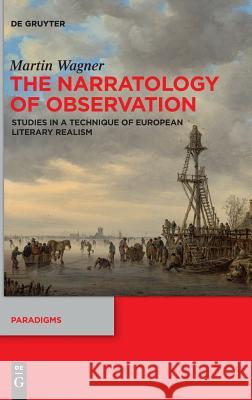The Narratology of Observation: Studies in a Technique of European Literary Realism » książka
topmenu
The Narratology of Observation: Studies in a Technique of European Literary Realism
ISBN-13: 9783110595185 / Angielski / Twarda / 2018 / 192 str.
Kategorie:
Kategorie BISAC:
Wydawca:
de Gruyter
Seria wydawnicza:
Język:
Angielski
ISBN-13:
9783110595185
Rok wydania:
2018
Ilość stron:
192
Waga:
0.45 kg
Wymiary:
23.39 x 15.6 x 1.27
Oprawa:
Twarda
Wolumenów:
01











